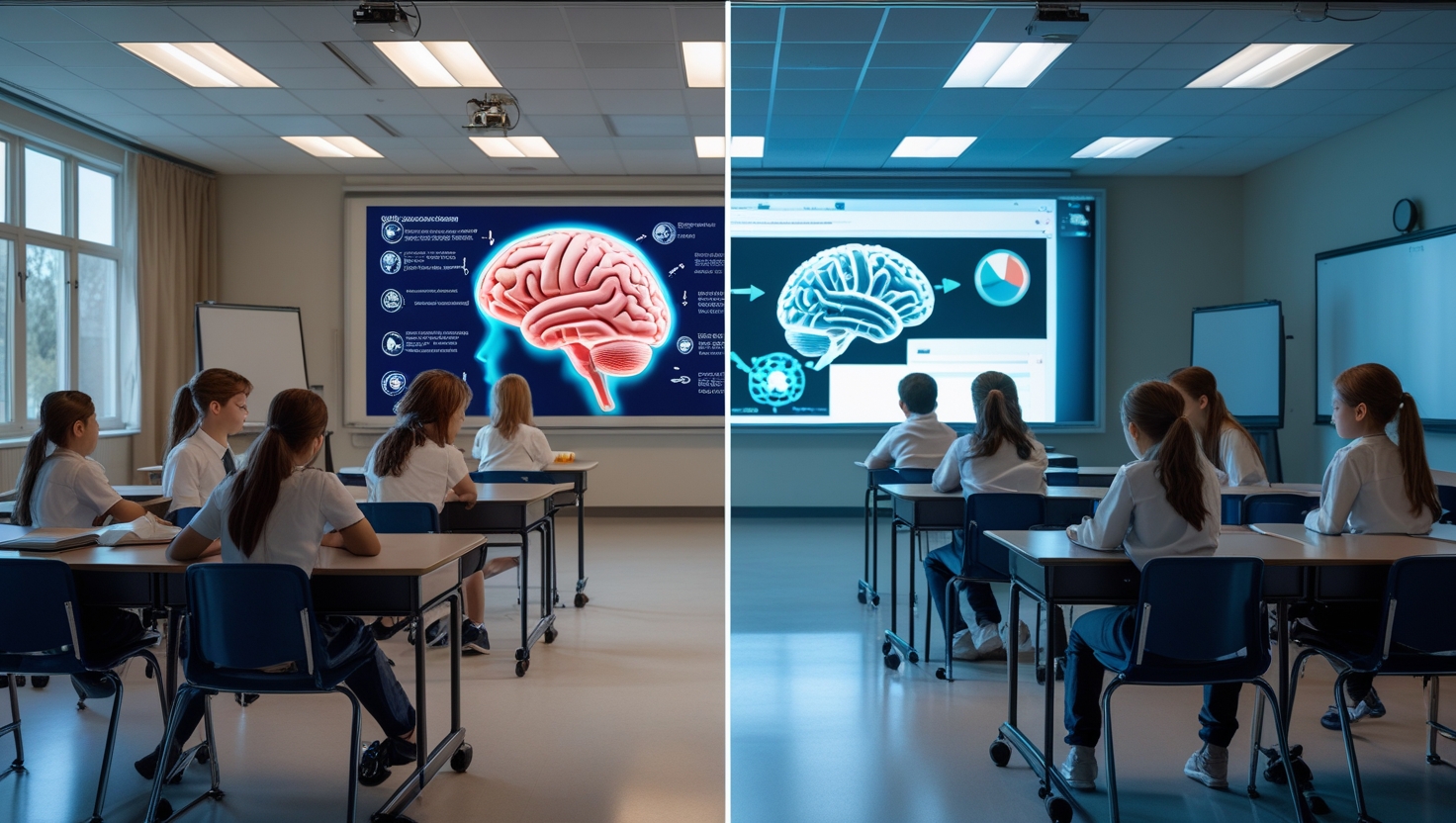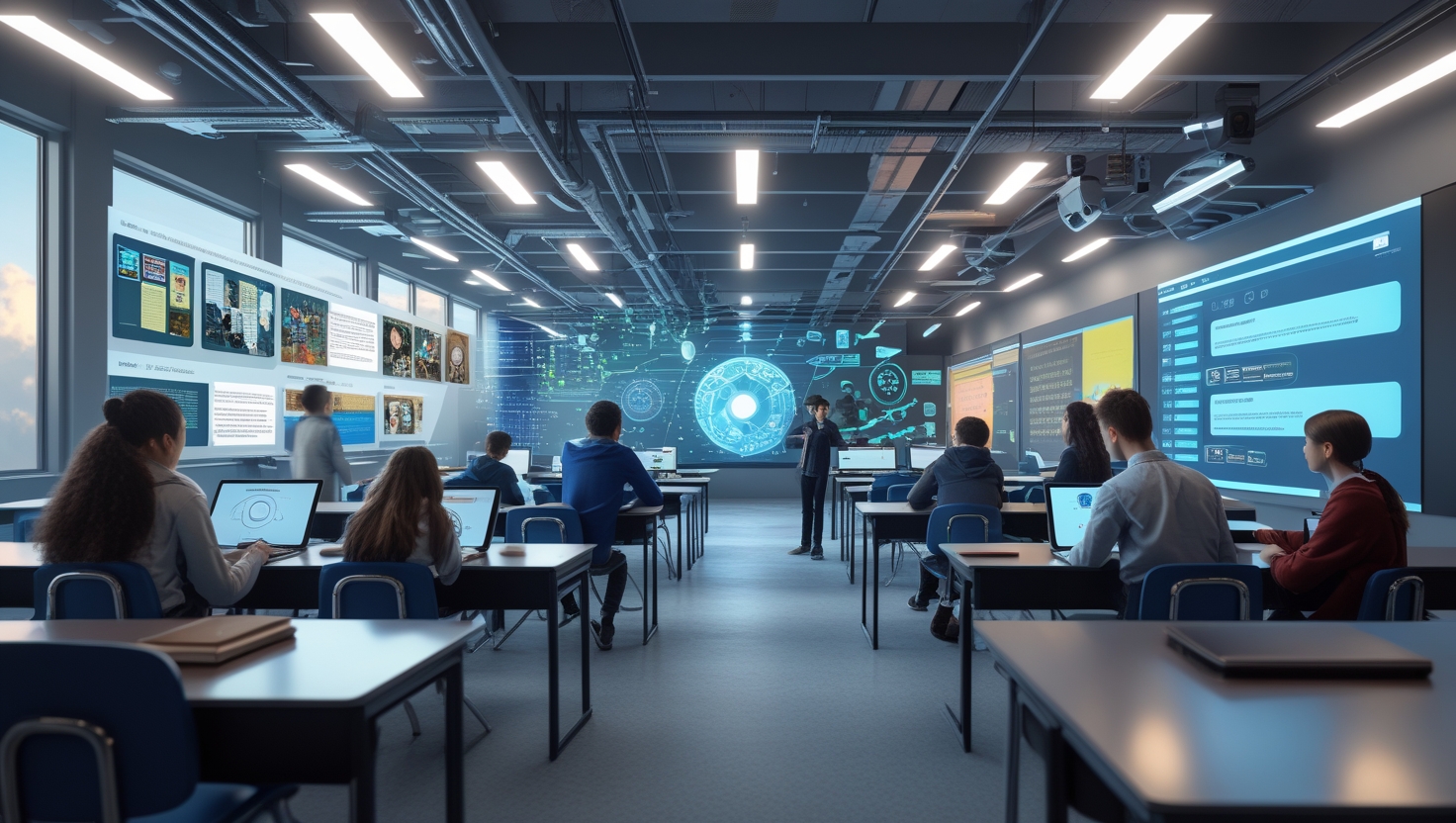The educational landscape is undergoing a profound transformation through artificial intelligence. Among the most promising applications is the use of sophisticated AI systems to provide personalized video content recommendations that adapt to individual learning styles, pace, and needs.
This evolution represents a significant shift from the one-size-fits-all approach that has dominated education for centuries. Let's explore how AI-powered video recommendations are reshaping learning experiences and what educators should know about this emerging technology.
Beyond Simple Algorithms: The New Generation of Learning Recommendation Systems
Early recommendation systems simply suggested content based on popularity or simple keyword matching. Today's educational AI systems operate on a fundamentally different level of sophistication:
Multimodal Learning Analysis
Modern systems analyze not just viewing history but multiple indicators of learning engagement and comprehension:
- Viewing patterns (pauses, replays, skipping)
- Performance on embedded assessments
- Time spent on related activities
- Natural language processing of student questions and comments
- Facial expression recognition (with appropriate privacy controls)
Cognitive Learning Models
Leading platforms now incorporate research-based cognitive learning models that track:
- Concept mastery across subjects
- Knowledge gaps and misconceptions
- Optimal challenge levels for cognitive growth
- Individual learning style preferences
- Attention patterns and engagement indicators
Adaptive Pathways
Rather than simply recommending "what to watch next," advanced systems create dynamic learning pathways that:
- Adjust difficulty based on performance
- Introduce prerequisite concepts when gaps are detected
- Vary content types to maintain engagement
- Time spaced repetition for optimal memory formation
- Balance coverage of curriculum requirements with personal interests
The Benefits of AI-Powered Video Recommendations
The thoughtful implementation of these systems offers several significant advantages for education:
Truly Personalized Learning
By analyzing individual learning patterns, AI systems can provide recommendations that address specific needs:
- Remediation videos that target precise misconceptions
- Content matched to preferred learning modalities (visual, narrative, problem-based)
- Appropriate pacing that prevents both boredom and frustration
- Examples and contexts relevant to student interests
- Adaptive challenge levels that maintain the optimal zone of proximal development
Expanded Discovery
Well-designed recommendation systems can broaden horizons rather than creating echo chambers:
- Interdisciplinary connections that students might not discover independently
- Exposure to diverse perspectives and teaching approaches
- Content that builds complementary skills related to primary interests
- Introduction to new subjects through connection points with existing interests
- Highlighting overlooked topics within a field of study
Efficient Learning Pathways
AI recommendations can optimize the learning journey:
- Reducing time spent searching for appropriate content
- Minimizing redundant coverage of mastered concepts
- Ensuring prerequisite knowledge is in place before advancing
- Identifying the most effective explanations for individual learners
- Creating smooth transitions between related concepts
Continuous Adaptation
Unlike static curricula, AI systems evolve with the learner:
- Adjusting to changing interests and goals
- Recognizing when learning approaches become less effective
- Responding to emotional states and engagement levels
- Incorporating new content as it becomes available
- Building cumulative knowledge of effective learning strategies for each student
Current Implementations and Platforms
Several educational platforms are already implementing sophisticated recommendation systems:
Integrated Learning Environments
Comprehensive platforms that combine video recommendations with other learning tools:
- Coursera's AI-driven "Learning Pathways" system
- Khan Academy's mastery-based recommendation engine
- Pearson+ adaptive learning ecosystem
- Duolingo's language learning recommendation algorithm
- McGraw Hill's ALEKS system for mathematics
Video-Specific Platforms
Platforms focused primarily on educational video discovery:
- EdX's personalized video sequence technology
- YouTube Learning's enhanced educational recommendations
- TED-Ed's concept-mapping recommendation system
- Wistia for Education's engagement-based suggestions
- LinkedIn Learning's skill-based recommendation engine
Institutional Systems
Custom systems designed for specific educational contexts:
- University learning management systems with integrated recommendation features
- District-wide K-12 platforms aligned with curriculum standards
- Corporate training systems that map to career development paths
- Professional development platforms for continuing education
- Custom solutions for specialized fields like medical education
Ethical Considerations and Challenges
The power of AI recommendations brings important responsibilities and challenges:
Transparency and Agency
Students and educators should understand and maintain control over the learning journey:
- Clear explanations of why content is being recommended
- Options to override or adjust recommendations
- Visibility into the learning model's assumptions
- Balance between algorithmic guidance and human choice
- Opportunities for students to set their own learning goals
Data Privacy and Security
Learning data is sensitive and requires protection:
- Transparent data collection and usage policies
- Secure storage of learning profiles and history
- Age-appropriate consent mechanisms
- Options to delete or transfer personal learning data
- Careful consideration of biometric data like facial expressions
Avoiding Bias and Narrowing
Recommendation systems can inadvertently reinforce limitations:
- Ensuring diverse representation in recommended content
- Preventing "filter bubbles" that limit exposure to new ideas
- Addressing algorithmic biases that may disadvantage certain groups
- Balancing optimization for engagement with educational value
- Incorporating serendipity and exploration into recommendation models
The Human Element
AI should complement rather than replace human educational relationships:
- Providing teachers with insights from recommendation data
- Maintaining space for discussion, debate, and social learning
- Recognizing the limits of algorithmic understanding of learning
- Preserving the motivational aspects of human recognition and feedback
- Using AI to enhance rather than automate the teaching process
The Future of AI Recommendations in Education
Looking ahead, several emerging trends will shape this field:
Multimodal Content Adaptation
Beyond simply recommending existing videos, future systems will:
- Dynamically adjust video pacing based on comprehension signals
- Generate custom visual explanations tailored to individual needs
- Create personalized practice problems based on video content
- Integrate multiple content types (video, text, simulation) into cohesive sequences
- Modify presentation styles based on learning preferences
Collaborative Intelligence
The next generation of systems will blend AI and social learning:
- Recommending peer learning opportunities around shared content
- Identifying potential study partners based on complementary knowledge
- Facilitating mentor-student connections around specific topics
- Creating learning communities with balanced expertise levels
- Incorporating peer feedback into recommendation algorithms
Contextual Awareness
Future systems will consider broader contexts in their recommendations:
- Adapting to physical learning environments (classroom, home, transit)
- Considering time constraints and optimal learning windows
- Responding to emotional and physiological states
- Aligning with cultural contexts and backgrounds
- Integrating with real-world projects and applications
Lifelong Learning Integration
Recommendation systems will increasingly span the educational lifecycle:
- Creating continuity between educational stages
- Integrating formal and informal learning resources
- Connecting academic concepts with workplace applications
- Building on personal learning history across platforms
- Supporting ongoing skill development throughout careers
Preparing for the AI-Enhanced Learning Future
Educators and institutions can take several steps to harness these technologies effectively:
Digital Content Strategy
Develop approaches that work well with recommendation systems:
- Consistent metadata tagging for educational videos
- Modular content design that allows flexible sequencing
- Multiple explanations of key concepts to suit different learning styles
- Clear prerequisite relationships between content pieces
- Embedded assessments that generate meaningful learning data
Professional Development
Help educators understand and work with AI systems:
- Training on interpreting recommendation data
- Skills for curating and supplementing AI-recommended content
- Understanding the capabilities and limitations of learning algorithms
- Strategies for maintaining educational relationships in AI-enhanced environments
- Approaches to teaching students digital literacy about recommendation systems
Institutional Policies
Develop frameworks that support ethical and effective implementation:
- Data governance policies for learning analytics
- Guidelines for balancing algorithmic and human decision-making
- Procurement standards for AI educational technologies
- Equity monitoring for recommendation outcomes
- Professional standards for AI-enhanced teaching
Conclusion
AI-powered video recommendations represent an exciting frontier in educational technology, offering unprecedented opportunities for personalization, efficiency, and engagement. However, their successful implementation requires thoughtful attention to ethical considerations, the preservation of human relationships in education, and careful integration with existing educational practices.
As these technologies continue to evolve, the most successful applications will be those that empower both educators and learners—enhancing human capabilities rather than replacing them, expanding horizons rather than limiting them, and making learning more accessible, effective, and personally meaningful for all students.
By approaching these technologies with both enthusiasm and critical awareness, we can help shape an educational future where AI serves as a powerful tool for human flourishing and learning.





3 Comments
Leave a Comment